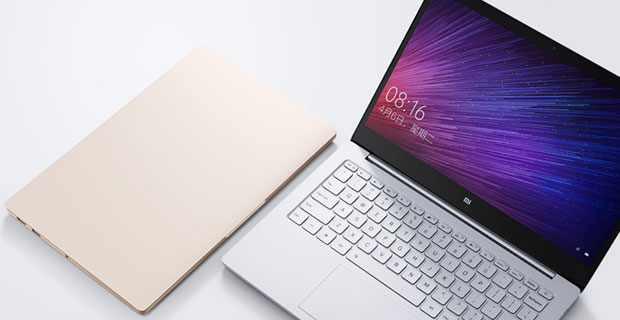Xiaomi on Wednesday unveiled the Mi Notebook Air, its challenger to the MacBook Air.
The 13.3-inch model is priced at US$750, compared to the MacBook Air’s $1,050 price tag in China. The device is also available in a 12.5-inch version.
The Mi Notebook Air, which runs Windows 10, offers a number of features that aren’t available in a MacBook Air.
“This is Xiaomi’s way of saying, ‘Let’s not let Apple, Lenovo, or the bigger manufacturers from Taiwan, like Acer and Asus, take this opportunity from us,” said Jeff Orr, a senior practice director at ABI Research.
While Xiaomi is “in the shadow of Apple from a brand perspective, they let Apple be that iconic brand,” he told TechNewsWorld, and instead “give people something like the functionality and experience of Apple at a more affordable price but in the Windows experience.”
Under the Hood
The Mi Notebook Air has a full-sized backlit keyboard and an edge-to-edge glass screen with thin bezels.
The 13.3-inch model is gaming-ready, with a full HD display (1,920 x 1,080 pixels), an Intel Core i5 processor, Nvidia’s GeForce 940MX discrete graphics card, 8 GB of RAM, 256 GB of storage, and a SATA slot that can handle drives of up to 256 GB.
It weighs about 2.8 pounds. It has one USB-C port for charging, two USB 3.0 ports, one HDMI port and a 3.5mm audio port.
It has a 9-hour battery life, and the battery gets a 50 percent charge in 30 minutes, according to the company.

Users can play games like Dota 2 at 85 frames per second at full HD resolution, Xiaomi said.
The 12.5-inch Mi Notebook Air has a 12.9 mm frame that weighs about 2.4 pounds. It has an Intel Core i3 processor, 4 GB of RAM and 128 GB of storage.
It does not have discrete graphics. Battery life is said to be more than 11 hours, and it’s priced at about US$525.
State of the PC Market
There have been some recent encouraging signs in the global PC market.
Its sales decline has slowed, according to IDC. Worldwide PC shipments in Q2 totaled 62.4 million units, a 4.5 percent decline year over year. The firm had expected a 7.4 percent drop.
That sets up the market for improved performance in the second half of the year, IDC suggested.
Xiaomi may benefit from this expected slight upturn.
“The opportunity in China is the younger middle class,” ABI’s Orr remarked. “This kind of computing platform would be a centerpiece in their home environment, and I’d expect multiple users rather than a single user.”
Xiaomi is “offering both lightness and great performance, and this will elevate them above local original device manufacturers, who make products for Taiwanese OEMs,” Orr suggested. “What those local ODMs lack that Xiaomi has is marketing and distribution.”
Locking Horns With Apple?
Apple’s revenue from China fell 33 percent year over year, to $8.8 billion, and it no longer is the company’s second-biggest market.
“This laptop from Xiaomi mostly targets Lenovo, Asus and Acer customers rather than Apple’s,” observed Eric Smith, a senior analyst at Strategy Analytics.
“It’s just sexier to call out Apple,” he told TechNewsWorld.
In any event, “Apple isn’t going to try to open all the doors in China for its products,” ABI’s Orr remarked. “The reason it wants to have Macs in China is because of the developer potential. If you can develop more Mac content and services that benefit the regional market, you create a demand and distinction for the Mac.”














































Very pocket friendly macbook
Xiaomi has imposed a sharp competition AM ong all the handset maker. As their product is not just a class but one of the best in the price tag it is available.
I’m so over expensive notebooks altogether. Not many need to spend $1500 or even $1000 for a light notebook anymore. I certainly have moved away from OS X and Mac’s. I now run Linux on a $500 Dell with a Core i5 and frankly with a SSD and 8GB RAM I would never go back to my Macbook Air. I have lighted keyboard, Intel Wireless, Bluetooth, and plenty of speed and battery life. I would even say some Chromebook’s probably are good enough for many. I AM not saying Linux is for everyone and lord knows some Apple fans would never consider anything but a Mac. But seriously, even Windows 10 is still bloated compared to a Linux version and OS X is quickly going that same direction. This is certainly a good time to use a computing device with so many good operating systems and the ability to be OS neutral and have cross platform support. It’s time to look beyond was was basically a Windows world.